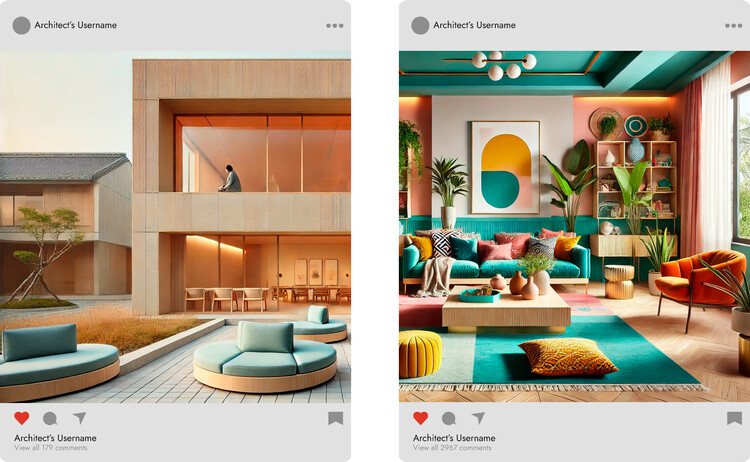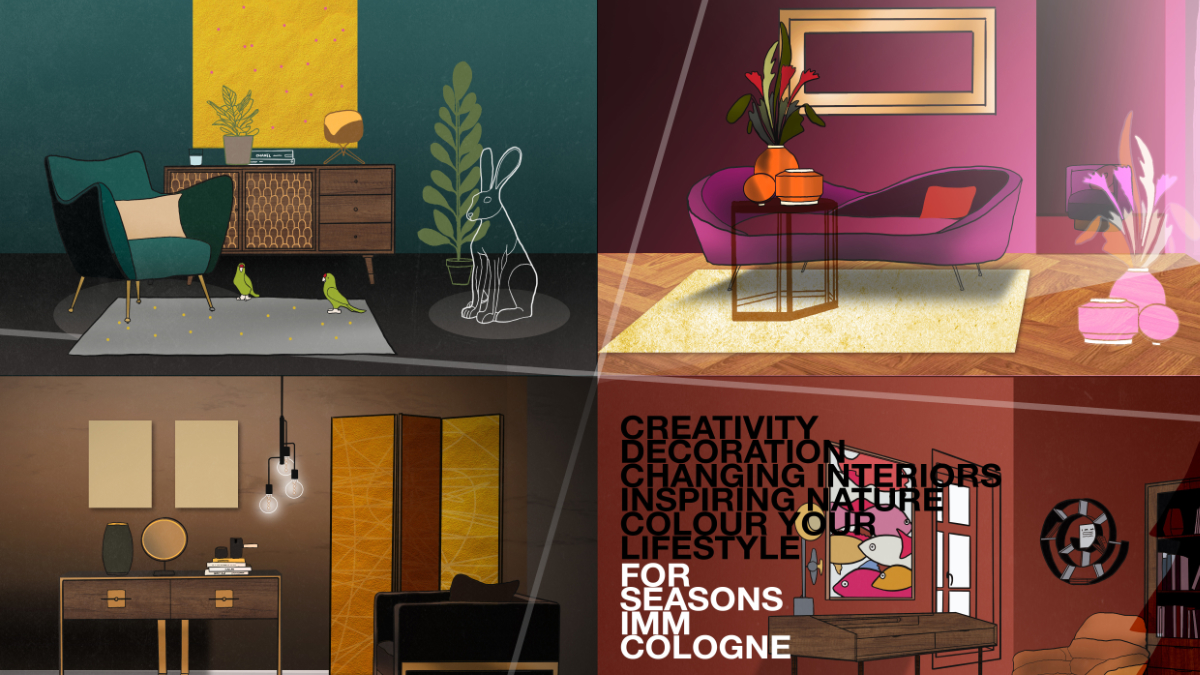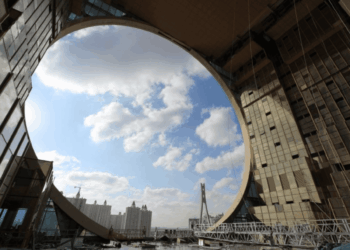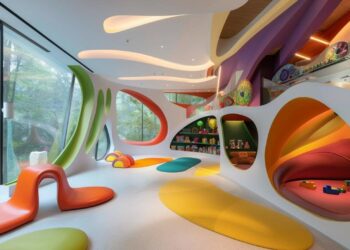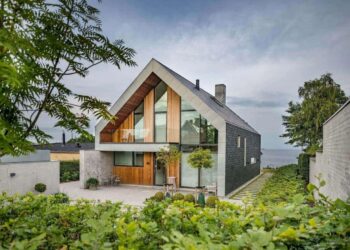In the digital age, social media has evolved far beyond a simple means of communication—it has become a powerful force that shapes lifestyles, trends, and even architectural tastes among the younger generation. With platforms such as Instagram, Pinterest, TikTok, and YouTube at the forefront, social media is redefining what it means to experience architecture. This transformation is not just about aesthetics; it involves a complete cultural shift that influences how architectural spaces are designed, presented, and experienced by youth across the globe. This comprehensive article will delve into how social media influences youth architectural preferences, the psychology behind these trends, the impact on design industries, and the opportunities and challenges that arise from these new digital paradigms.
Social Media and Architecture
The rapid growth of social media has revolutionized the way we discover and share information. Architecture, traditionally appreciated through magazines, books, and in-person visits, has now found a robust digital platform. Young people, in particular, are drawn to social media for inspiration, discovery, and engagement. As they scroll through their feeds, they encounter striking images of futuristic facades, innovative interiors, and creative urban spaces that challenge traditional boundaries and stimulate new design ideologies.
The Rise of Visual Storytelling
Social media thrives on visual content, and architecture is inherently a visual medium. Platforms like Instagram allow designers and architects to showcase their work in a way that is both immediate and immersive. High-quality images, engaging videos, and even virtual walkthroughs have become commonplace. This visual storytelling not only captures attention but also encourages exploration and discussion among its young audience.
The Role of Influencers
Influencers on social media have emerged as key opinion leaders in the realm of architectural aesthetics. These individuals or groups curate content that highlights modern design elements, sustainability practices, or historical architectural reinterpretations. Their opinions and tastes shape public perceptions and inspire youth to explore architectural spaces and design concepts that resonate with digital culture.
The Digital Influence on Architectural Trends
A. Bridging Global Cultures
Social media has made the world smaller by creating platforms for cross-cultural exchange. Architectural styles and trends that were once geographically limited are now shared globally. Youth in one part of the world can easily be inspired by architectural innovations from another, fostering a global dialogue. For instance, the minimalist and sustainable design trends popular in Scandinavian countries are making significant inroads in cities across Asia and North America.
A.1 Global Accessibility
A. Social media platforms democratize access to architectural content.
B. Youth from diverse cultural and social backgrounds are now exposed to a variety of design styles.
C. This convergence of perspectives encourages a hybridization of styles, where traditional and modern elements coexist.
B. From Virtual Inspiration to Physical Experience
The influence of social media is not confined to the virtual realm—it has tangible impacts on how spaces are created and experienced. Youth inspired by digital trends often seek to transform their physical environment, whether it is through home renovations, campus designs, or community spaces. This evolving expectation is pushing architects and designers to adapt their methods to create versatile, interactive, and aesthetically appealing spaces.
B.1 User-Centered Design
A. Social media feedback loops give architects instant responses on their designs.
B. Crowdsourced critiques help refine and tailor designs to match the tastes of younger clients.
C. Enhanced collaboration between designers and users leads to more personalized and innovative architectural solutions.
C. The Emergence of Digital Aesthetics in Architecture
Digital aesthetics have increasingly found their way into physical constructions. Geometric patterns, vibrant color palettes, and dynamic forms that originate in digital art are being incorporated into modern architectural designs. This synthesis of digital and physical realms is emblematic of a generation that grew up with technology and expects its influence to permeate every aspect of life.
C.1 Innovations in Material and Form
A. Digital fabrication techniques allow for new forms and complex geometries.
B. The use of sustainable materials complements the eco-friendly ethos promoted on social media.
C. Innovative lighting and smart systems integrate seamlessly with modern designs, creating spaces that adapt to the needs of their users.
Psychological Impact on Youth Architectural Preferences
A. Identity and Self-Expression
For many young people, the spaces they inhabit are an extension of their personalities. Social media provides endless inspiration, allowing individuals to craft a unique identity through their choices in architecture and interior design. The contemporary generation is highly attuned to aesthetics, valuing design that is not only functional but also expressive of personal narratives.
A.1 Curated Digital Identities
A. Youth curate their digital profiles to reflect their tastes and lifestyles.
B. Architectural images on social media become symbols of status, creativity, and individuality.
C. The continuous interplay between self-expression and visual influence drives the demand for unique, bespoke design solutions.
B. Social Proof and Validation
In the world of social media, likes, shares, and comments serve as modern-day currency. This digital validation influences architectural preferences by reinforcing what is considered trendy or desirable. Young users often seek designs that are not only innovative but have also garnered approval from influential figures or peer groups online.
B.1 The Bandwagon Effect
A. When a design trend becomes popular on social media, it gains widespread legitimacy.
B. Peer influence can drive collective preferences, leading to rapid adoption of specific architectural styles.
C. Social validation mechanisms ensure that certain design trends remain in the cultural spotlight.
C. The Desire for Experience and Storytelling
Architecture is not merely about structures; it is about the experiences they foster. Social media has heightened the desire for spaces that tell a story—whether through their historical significance, innovative design, or cultural resonance. Young architects are increasingly embracing narrative-driven design, where every element is imbued with meaning and purpose.
C.1 Narrative Design
A. Spaces are designed to evoke specific emotions or memories.
B. The architecture is intertwined with storytelling, creating environments that are both beautiful and meaningful.
C. This approach transforms mundane spaces into captivating experiences that resonate on a personal level.
The Impact on the Architectural Industry
A. Shifts in Design Priorities
The influence of social media has shifted architectural design priorities from purely functional considerations to a more holistic approach that integrates aesthetics, technology, and environmental consciousness. Architects are now tasked with creating designs that are not only structurally sound but also visually compelling and sustainable.
A.1 Redefining Success
A. Success in architecture is increasingly measured by visual impact and digital engagement.
B. Innovative designs that attract social media attention often lead to more business opportunities.
C. Architects are incorporating digital trends into their core design philosophies to stay relevant.
B. Increased Collaboration and Open Innovation
Digital platforms have paved the way for unprecedented levels of collaboration between architects, designers, and digital content creators. Social media encourages a culture of open innovation, where ideas are exchanged, modified, and improved upon in a highly dynamic environment. This collaborative spirit has led to groundbreaking projects that blend technology and creativity in novel ways.
B.1 Cross-Disciplinary Partnerships
A. Collaboration between architects and digital influencers brings fresh perspectives.
B. Cross-disciplinary partnerships result in innovative and multifunctional spaces.
C. These alliances drive the evolution of architectural design in response to new social media trends.
C. Marketing and Branding in the Digital Age
For many architectural firms, social media has become an essential marketing tool. The ability to showcase projects online, engage with potential clients, and build a recognizable brand has transformed the industry. Digital campaigns, influencer collaborations, and virtual tours are now integral components of architectural branding strategies.
C.1 Digital Marketing Tactics
A. Strategic use of social media advertising increases visibility.
B. Engaging storytelling and immersive visuals build strong brand identities.
C. SEO techniques and content marketing help reach targeted audiences, driving business growth.
Opportunities and Challenges
A. Opportunities
Social media presents a host of opportunities for young architects and designers. The democratization of design through digital platforms allows for greater exposure and faster dissemination of innovative ideas.
A.1 Key Opportunities
A. Enhanced Global Reach: Social media removes geographic barriers, allowing designs to be shared with a worldwide audience.
B. Accelerated Trend Identification: With real-time engagement, emerging architectural trends are quickly identified and adopted.
C. Direct User Feedback: Instant feedback from users helps architects refine and tailor their projects.
D. Increased Collaboration: Digital platforms facilitate cross-sector partnerships, leading to more inventive design solutions.
B. Challenges
Despite these opportunities, social media also brings certain challenges that the architectural industry must navigate. The intense focus on visual appeal can sometimes overshadow the functional and sustainable aspects of design. Additionally, the fast-paced nature of social media trends may lead to superficial designs that lack depth and long-term viability.
B.1 Notable Challenges
A. Quality vs. Quantity: Balancing the need for rapid content generation with maintaining high-quality design standards.
B. Ephemeral Trends: Social media trends are often short-lived, which can result in an overemphasis on fleeting fads rather than enduring design principles.
C. Intellectual Property Concerns: The widespread sharing of design ideas raises issues about originality and copyright.
D. Commercial Pressure: The drive for increased monetization can sometimes compromise creative integrity.
Future Directions: Architecture in the Social Media Era
The impact of social media on youth architectural preferences is only expected to grow. As technology continues to evolve, so too will the ways in which architecture is conceptualized, designed, and experienced. Emerging trends such as augmented reality (AR) and virtual reality (VR) are set to transform the industry further, offering immersive design experiences that blur the lines between digital and physical spaces.
A. Integration of AR and VR
Innovative applications of AR and VR in architecture enable users to experience designs in an interactive environment before they are built. Virtual walkthroughs, real-time modeling, and immersive augmented reality presentations provide a deeper understanding of architectural spaces. These tools are particularly appealing to young audiences, who are both tech-savvy and eager for novel experiences.
A.1 Future Innovations
A. Adoption of AR apps in urban planning.
B. Virtual reality simulation for residential and commercial projects.
C. Digital customization of interior designs using interactive platforms.
B. Sustainable and Smart Cities
In the evolving landscape of modern architecture, sustainability remains a crucial component. Social media has amplified the call for eco-friendly designs and smart solutions that contribute to better urban living. Young people are increasingly advocating for buildings that not only serve practical purposes but also contribute to environmental conservation and community well-being.
B.1 Initiatives Driving Change
A. Implementation of green roofs and vertical gardens.
B. Adoption of renewable energy sources in design.
C. Development of smart cities with integrated digital ecosystems.
D. Promotion of energy-efficient building materials and practices.
C. Educational and Professional Growth
Social media platforms provide vast opportunities for learning and professional development in architecture. Online courses, webinars, and digital design communities offer continuous learning opportunities for aspiring architects. These platforms foster an environment where education is accessible, collaborative, and ongoing.
C.1 Educational Opportunities
A. Virtual design workshops and conferences.
B. Online mentoring and peer-to-peer learning communities.
C. Extensive digital libraries featuring case studies and design templates.
D. Crowdsourced design contests promoting innovation.
The Broader Impact on Urban Living
Beyond influencing individual tastes, social media is reshaping urban spaces on a larger scale. Cities are increasingly designed with the digitally native generation in mind, incorporating interactive public spaces, smart infrastructure, and community-driven urban projects.
A. Urban Redevelopment Projects
Many cities now actively engage with social media trends during urban redevelopment projects. Planners and architects seek input from the community to ensure that public spaces are not only innovative but also inclusive and reflective of contemporary lifestyles.
A.1 Community-Driven Design
A. Online surveys and social media polls guide urban planning decisions.
B. Virtual town halls allow residents to voice their opinions on public projects.
C. Collaboration between city officials and digital influencers enhances community engagement.
B. Enhancing Cultural Identity
Architecture is a significant component of a city’s cultural identity. Social media has given a platform to celebrate local heritage while embracing modern design. This blend of tradition and innovation helps young people connect with their cultural roots while also pushing the boundaries of what is possible in contemporary architecture.
B.1 Fostering a Sense of Place
A. Revitalizing historic districts with modern design elements.
B. Integrating art installations that highlight regional history.
C. Creating iconic landmarks that resonate on both local and global levels.
D. Using digital storytelling to showcase the evolution of cityscapes.
Convergence of Creativity and Technology
The intersection of creativity and technology is at the heart of how social media influences architectural preferences among youth. This convergence encourages bold experimentation and risk-taking, leading to breakthrough designs that might have otherwise remained unexplored. From digital sculptures and interactive facades to smart home integrations and adaptive reuse projects, the digital influence fosters a spirit of innovation.
A. Creative Collaborations
Young architects are increasingly collaborating with digital artists, tech developers, and even social media influencers to create unique, multi-dimensional projects. These collaborations result in designs that are both aesthetically striking and highly functional.
A.1 Key Collaboration Benefits
A. Fusion of diverse skill sets enriches design processes.
B. Exposure to new technologies and creative methods enhances overall project quality.
C. Joint ventures between industries lead to innovative and sustainable architectural solutions.
B. The Democratization of Design
One of the most remarkable outcomes of social media’s influence is the democratization of design. In the past, architectural appreciation was confined to experts and connoisseurs. Today, the visual nature of platforms like Instagram and Pinterest allows the broader public—especially young people—to partake in the design conversation, vote on trends, and even contribute ideas for future projects. This open-access approach fuels innovation and ensures that architectural design evolves to meet the needs of a diverse, connected community.
B.1 Advantages of Democratized Design
A. Greater public participation leads to more inclusive designs.
B. Diverse perspectives drive creativity and improve urban planning.
C. Social validation of design trends reinforces their relevance and appeal.
D. Increased engagement with architecture builds a stronger sense of community identity.
Real-World Examples and Case Studies
A. Innovative Residential Projects
Many modern residential projects incorporate elements directly inspired by social media trends. These projects prioritize open-concept layouts, natural light, and multifunctional spaces that cater to the dynamic lifestyles of young residents. The emphasis is not only on visual appeal but also on creating an environment that supports work, play, and community interaction.
A.1 Case Study: The Digital Loft
A. A residential building designed for tech-savvy urbanites.
B. Open floor plans that encourage flexibility and personal customization.
C. Integration of smart home technology for energy efficiency.
D. Aesthetic elements inspired by digital art and social media visuals.
B. Urban Public Spaces
Urban public spaces have also seen a transformation driven by digital influences. Many cities are developing communal areas that incorporate interactive art installations, dynamic lighting, and digital interfaces. These spaces foster community engagement and offer a platform for public expression and cultural celebration.
B.1 Case Study: The Interactive Plaza
A. A public square equipped with touch-sensitive digital kiosks.
B. Immersive light shows that change with ambient conditions.
C. Smart benches and seating that adapt to user comfort.
D. Integrated social media feeds displaying local art and community events.
C. Educational Institutions and Campus Designs
School and university campuses are increasingly reflecting social media trends in their architecture. Modern educational facilities incorporate collaborative spaces, technologically advanced classrooms, and communal areas designed to stimulate creativity and social interaction. The design of such spaces takes cues from digital aesthetics, appealing to the younger generation’s desire for innovative, flexible learning environments.
C.1 Case Study: The Collaborative Campus
A. Classrooms with adaptive seating arrangements and digital interfaces.
B. Communal hubs that encourage peer-to-peer interaction and creative workshops.
C. Use of sustainable materials and eco-friendly building practices.
D. Integration of digital information boards and interactive maps.
Conclusion
Social media is not merely a trend or a fleeting phase; it is a transformative force that is reshaping the way young people interact with architecture. Through visual inspiration, digital storytelling, and the democratization of design, social media platforms are influencing preferences that extend well beyond a single post or photo. They are heralding a new era where architectural aesthetics are inextricably linked to digital culture—where designs are shaped by global influences, technological integrations, and a collective yearning for spaces that reflect individual identities and community values.
The future of architecture lies in the harmonious blend of traditional craftsmanship and digital innovation. As social media continues to evolve, its impact on youth architectural preferences will only deepen, inspiring architects to explore new horizons and redefine what it means to create spaces in the modern world.
This ongoing dialogue between the digital and physical realms presents both unprecedented opportunities and challenging obstacles. Yet, the creative energy unleashed by this convergence promises a vibrant, dynamic future for architecture—one that celebrates innovation, inclusivity, and the endless possibilities of human expression.

